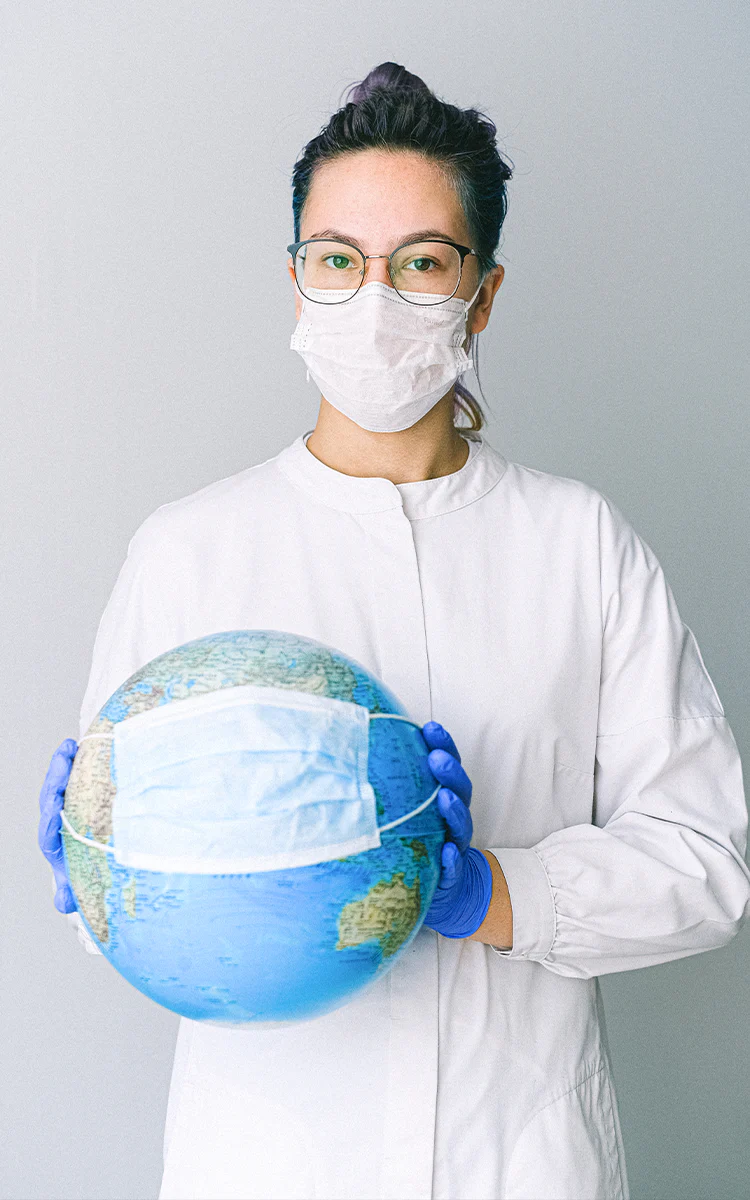
BE THE FIRST TO KNOW
About our newest arrivals, special offers plus 10% off on your first order.
Personal protective equipment used in health care environments includes isolation gowns. They are used to prevent the transmission of infection or disease if the user comes into touch with potentially infectious liquid or solid material. They may also be employed to keep the isolation gown wearer from transmitting pathogens that might damage sensitive patients, such as those with compromised immune systems. Medical gowns are one component of a comprehensive infection-control approach.
Operating room gowns, procedural gowns, non-surgical gowns, surgical isolation gowns, isolation gowns, and surgical gowns are just a few of the numerous titles that have been used to refer to gowns designed by any isolation gown manufacturer for use in health care settings.
Medical staff wears disposable isolation gowns to avoid contact with bodily fluids, blood, and other infectious materials, or to protect patients from infection.
Disposable gowns are not appropriate in a surgical environment or if extensive exposure to body fluids or other hazardous fluids is anticipated.
The FDA approved the consensus standard American National Standards Institute/Association for the Advancement of Medical Instrumentation (ANSI/AAMI) PB70:2003, “Liquid barrier performance and categorization of protective garments and drapes designed for use in health care facilities,” in 2004. The standard’s new language outlines the barrier protection levels of gowns and other protective gear intended for use in health care institutions, as well as the test techniques and performance results required to verify and validate that the gown delivers the newly specified levels of protection:
Level 1 Gowns: Low risk, for instance, in a standard medical unit, as a visitor cover gown, in standard isolation, or during basic care.
A single trial of water hitting the gown material’s surface is acted to determine barrier protection effectiveness.
Provides a minor barrier to the passage of tiny quantities of liquids.
Level 2 Gowns: Low-risk, for use in a pathology lab, the Intensive Care Unit (ICU), suturing, or blood draws, for example.
To evaluate barrier protection performance, two tests are performed: pressurizing the material and water striking the gown material’s surface.
Prevents substantial amounts of fluid from lancing through spattering and some runny exposure via soaking.
Consider three crucial factors while purchasing PPE Gowns from medical equipment distributor. The first consideration is the sort of anticipated exposure. The sort of expected exposure, such as sprays, splashes, or contact, or huge quantities of human fluids or blood that may permeate the garment, determines this. The type of isolation precautions a patient is on also influences PPE selection, particularly the combination of PPE. The second factor, which is closely related to the first, is the durability and suitability of the PPE for the work. This will influence whether a PPE apron or gown is selected, as well as if an isolation gown has to be fluid proof, fluid-resistant, or neither. The third factor is fitness.
Hospital gowns are often composed of a fabric that can endure repeated washings in hot water, such as cotton. Twill tape ties are typically used to secure them at the rear. Disposable medical gowns can be constructed of thin plastic or paper, and they can be tied using paper or plastic ties.
Covid-19 has put a significant focus on personal protective equipment (PPE) and infection control as Senior Living societies seek to safeguard visitors, staff, and residents. Selecting isolation gowns, or PPE gowns can be rough throughout conventional capacity times when PPE is in total supply. Throughout disaster catastrophe times, the choice can be even harder with the requirement for dozens of disposable isolation gowns wholesale each day or even each shift.
Here are some major considerations as well as questions.
Isolation gown’s purpose is to aid defend your staff and frontline caregivers from infectious solids, fluid penetration, and droplets, and aid put off the transmission of micro-organisms to susceptible residents.

There are two major categories of isolation gowns designed for healthcare purposes:
Isolation or non-surgical gowns are class 1 kits designed to safeguard the wearer from the transmission of body fluids and microorganisms in minimal or low-risk patient isolation cases. Non-surgical gowns are not worn throughout medical procedures, all-encompassing procedures, or when there is a high or medium risk of contamination.
A surgical gown is a personal protective kit designed to be worn by health care personnel throughout surgical procedures to safeguard both the health care personnel and patient from the transmission of particulate matter, microorganisms, and body fluids.
What’s on the product label is more vital than the name of the product. For these reasons, people use the name isolation gown. But you must pay less attention to the name of a product and more attention to function, intended use, and what level of protection is offered. The packaging or label will call this out.
Throughout the covid-19 pandemic, key objectives are to safeguard frontline Senior Living employees from the unfold of Covid-19 and to safeguard the unintentional transfer of covid-19 to other staff and residents. Level 1 simple fluid resistance in a non-surgical isolation gown is most likely enough. Having a surgical gown with a greater level rating isn’t necessary as there isn’t a widespread risk of blood or other bodily fluids being transmitted.
In a non-covid-19 planet, every staff member would have a gown that fit them flawlessly. Throughout the present PPE shortage, that’s not sensible in many parts of the nation, and a global size might be the only choice.
Business owners if you want to source PPE in bulk for your retail store then get in touch with a medical goggles manufacturer as soon as possible. Drop a mail to the support team stating your order details and the team will reach out to you soon.
Copyright © 2025 8Health. All Rights Reserved.